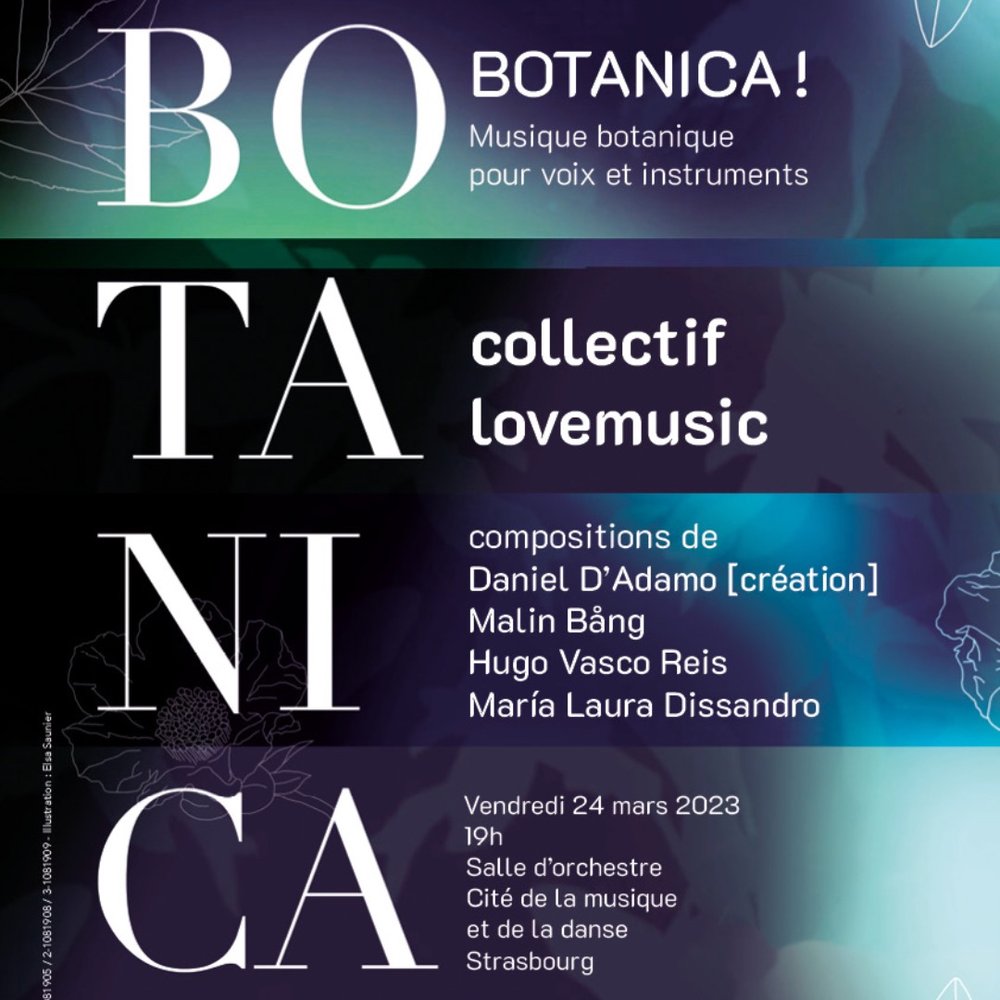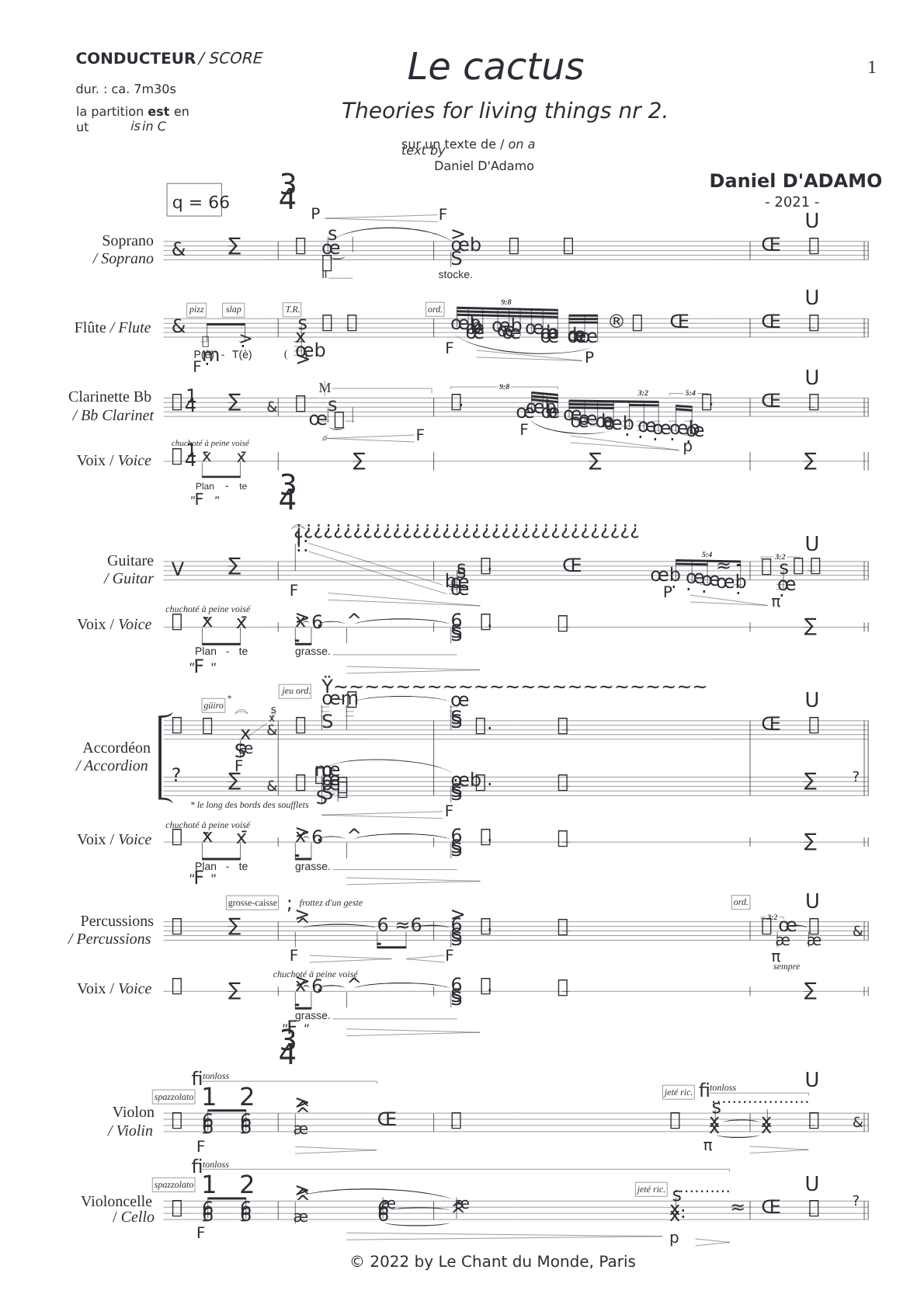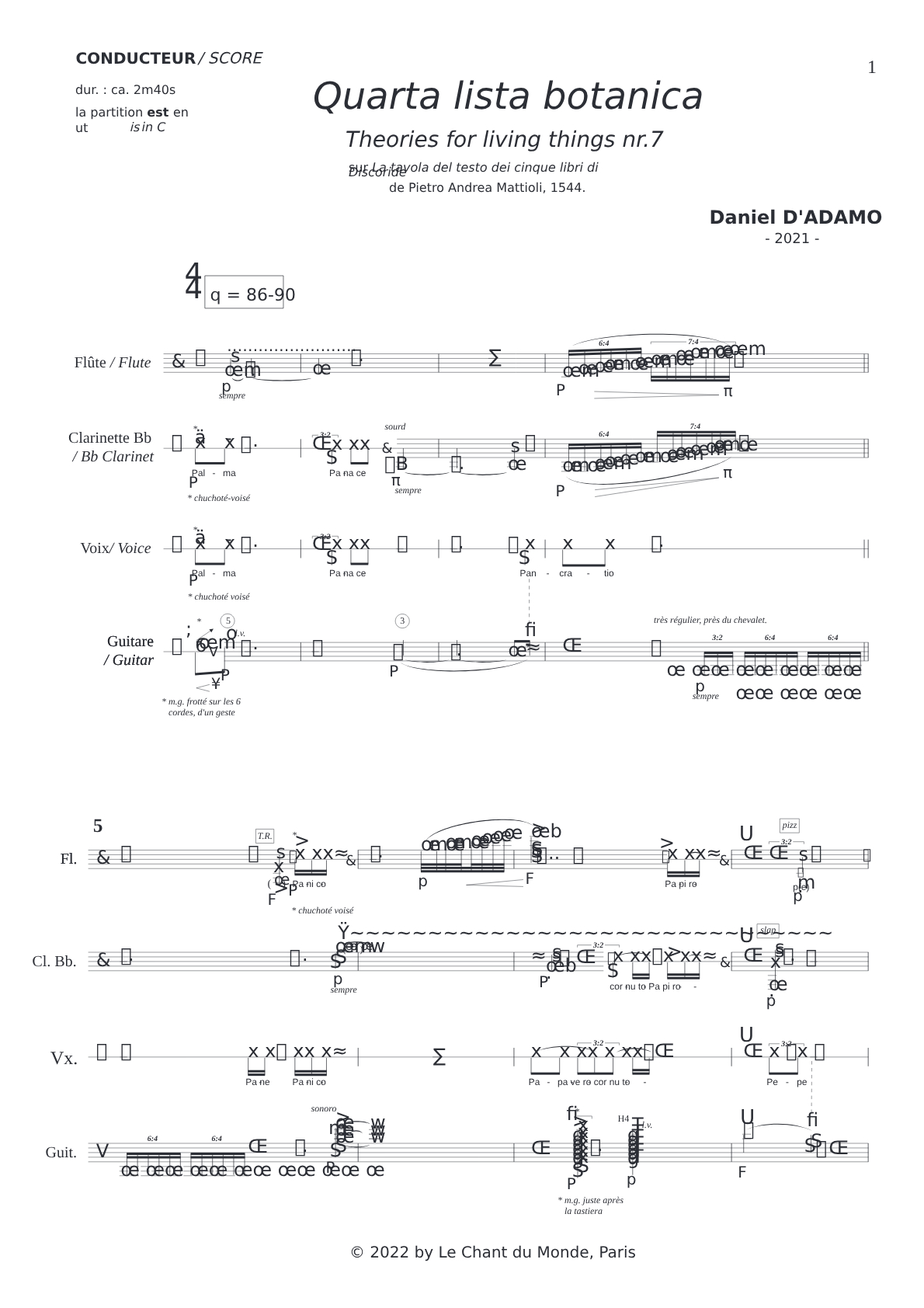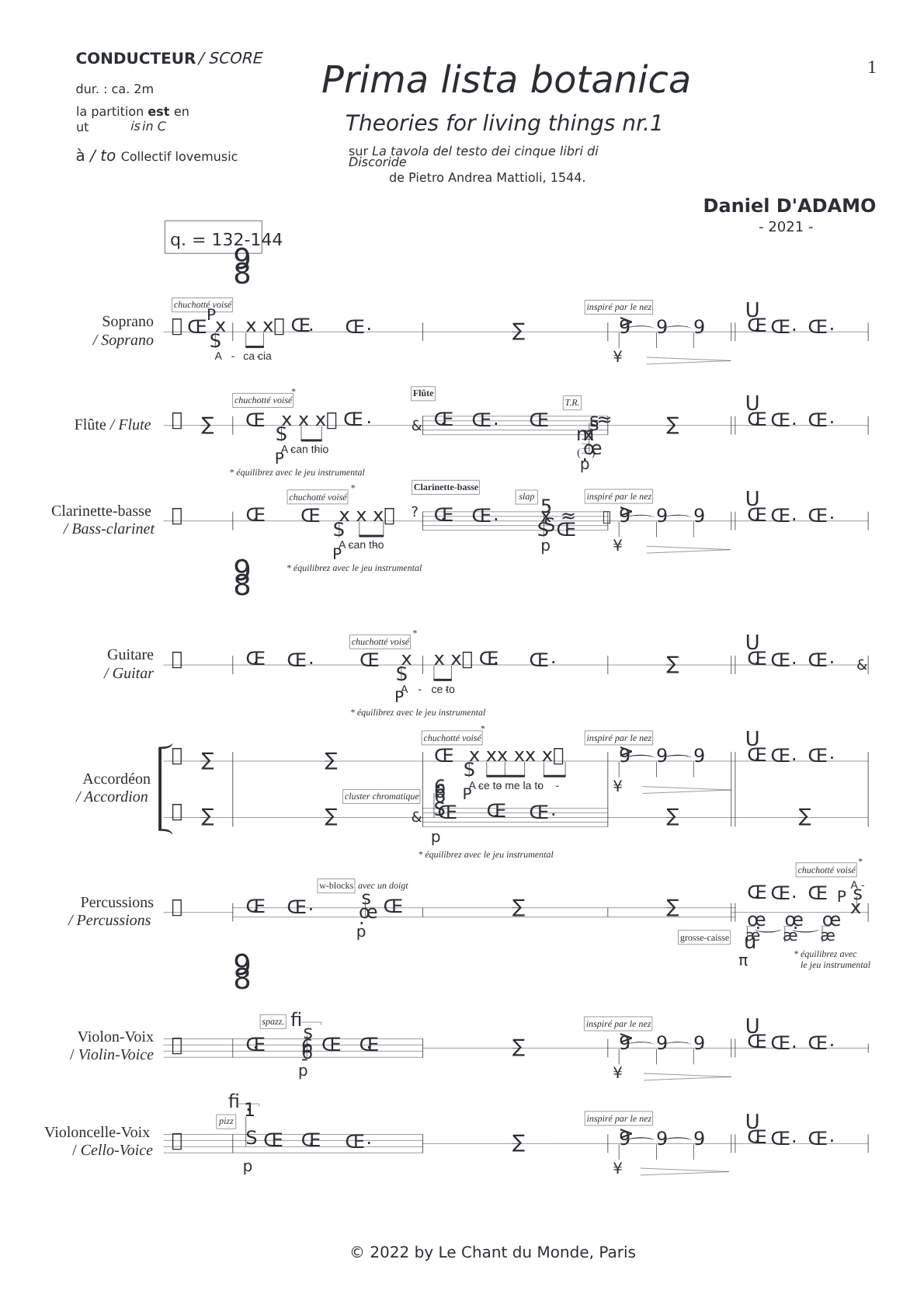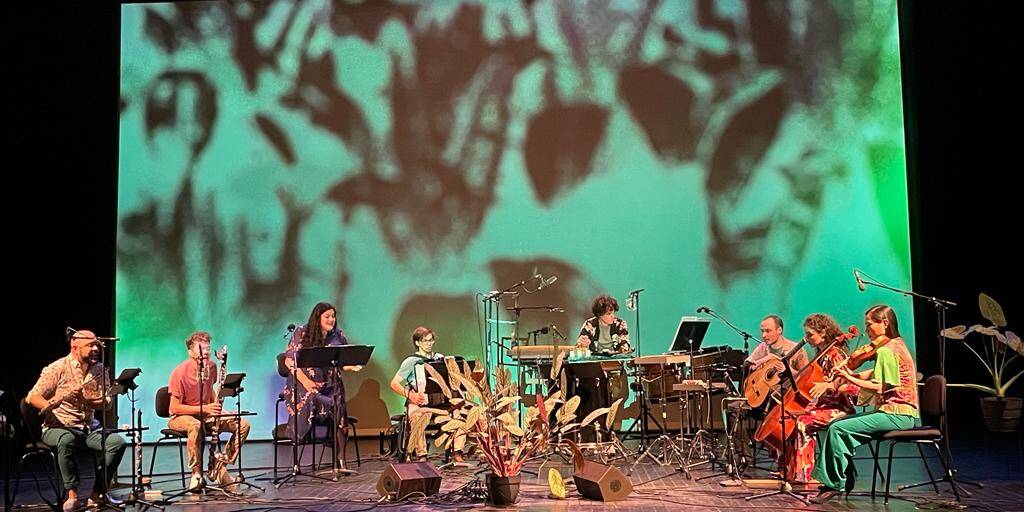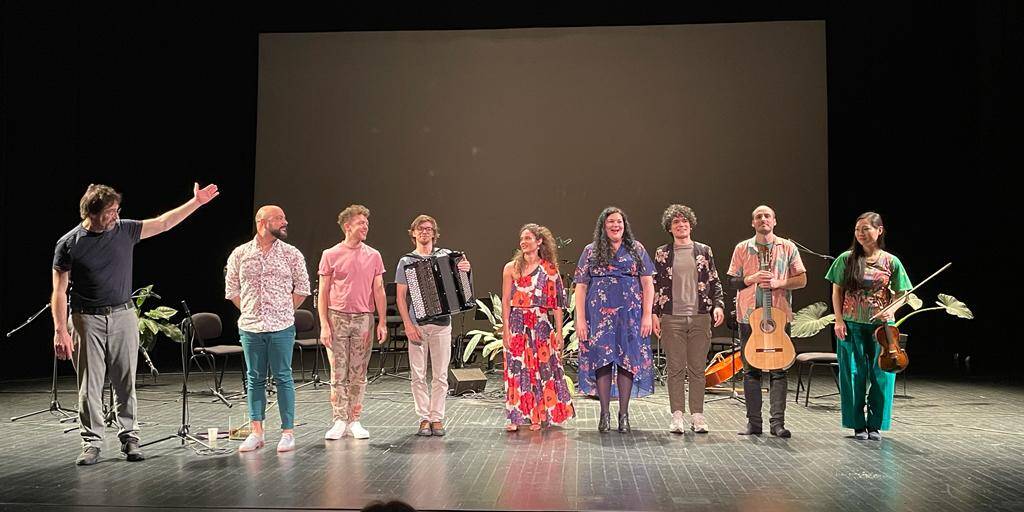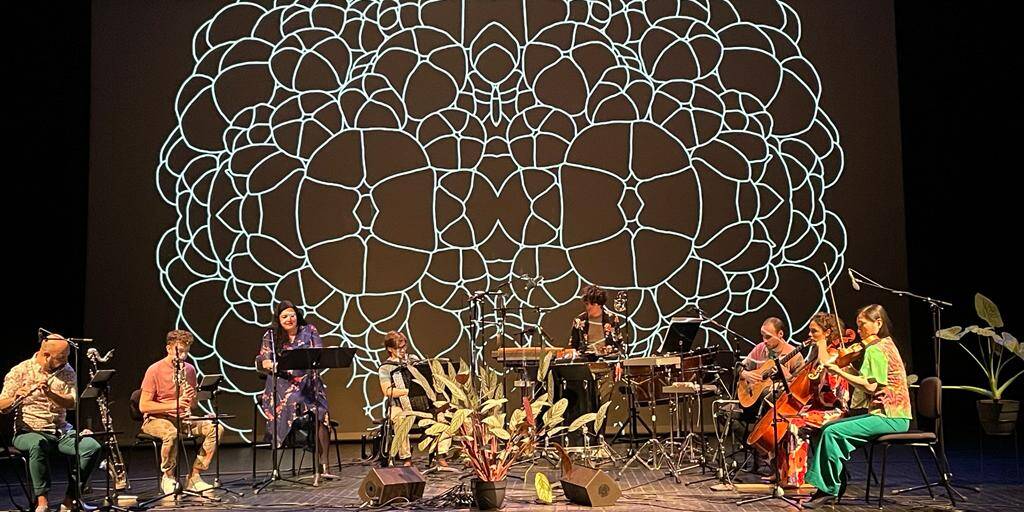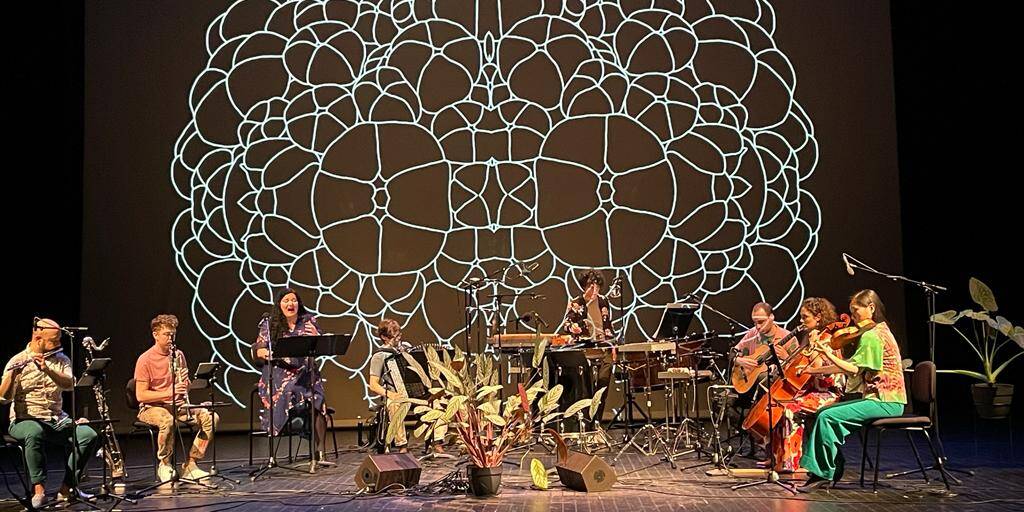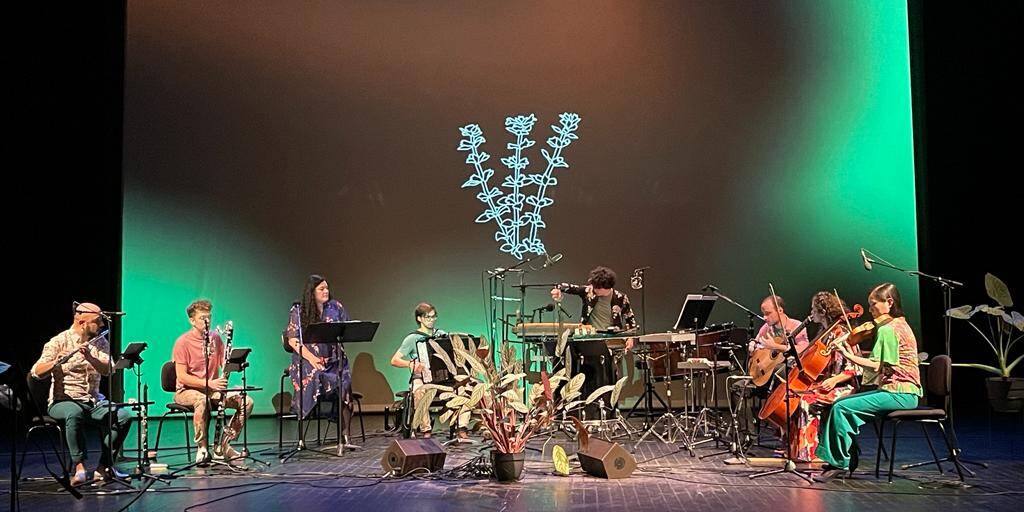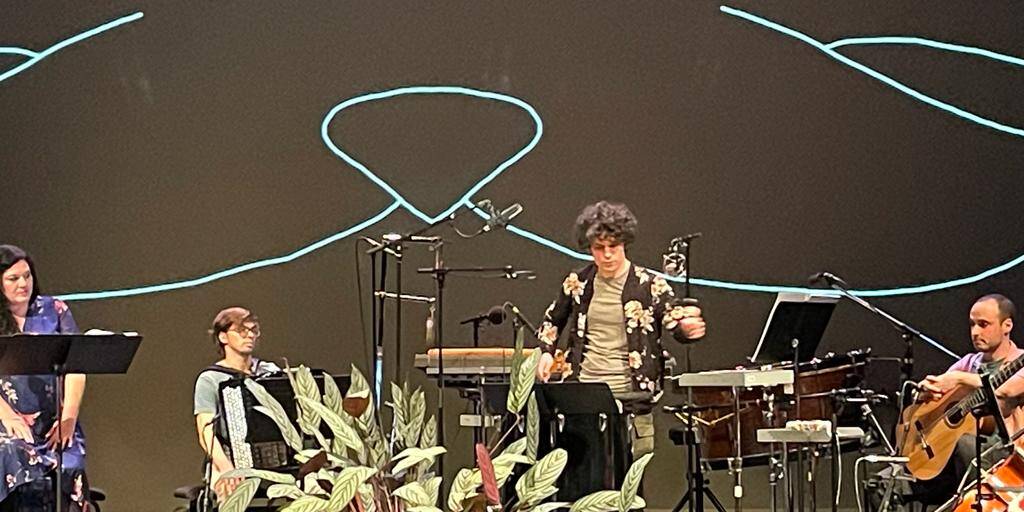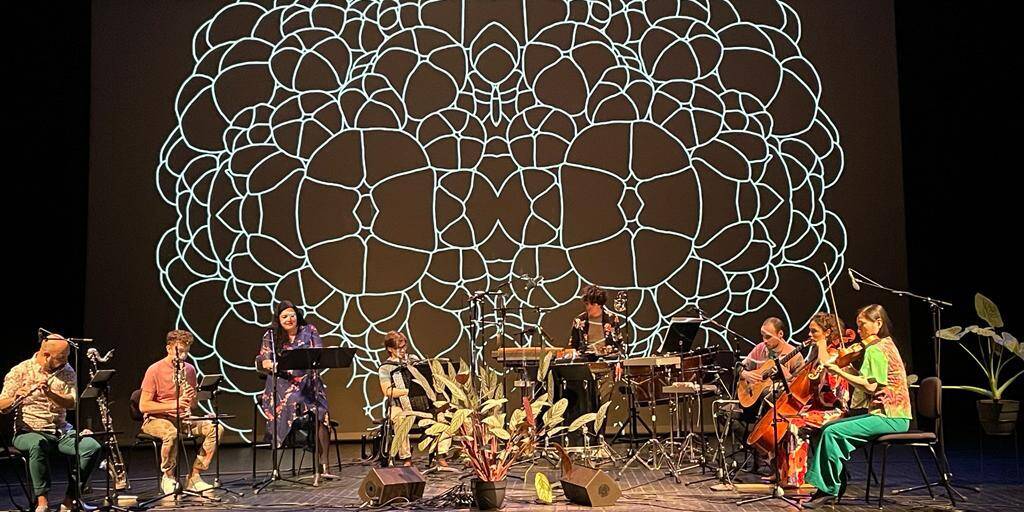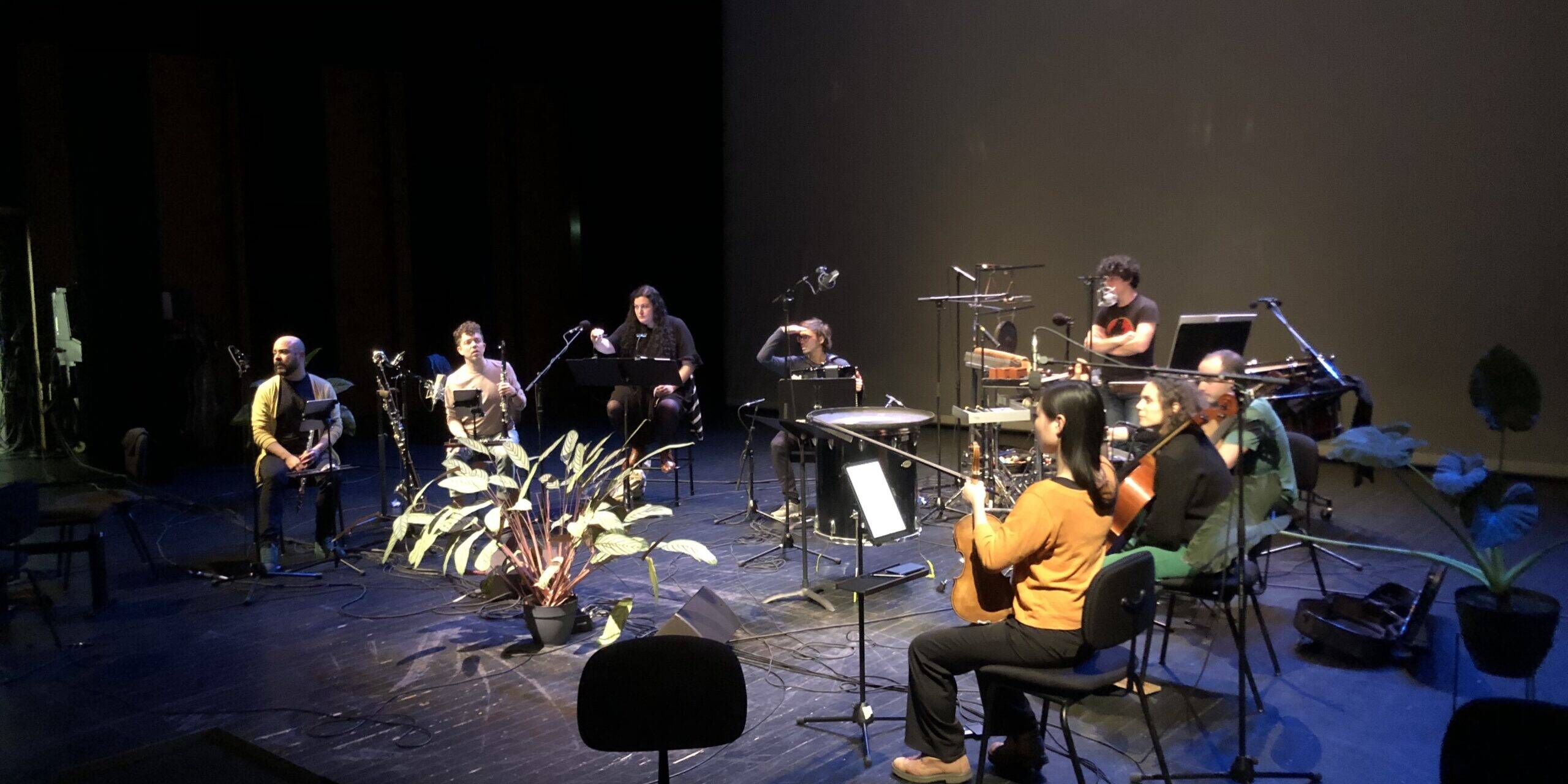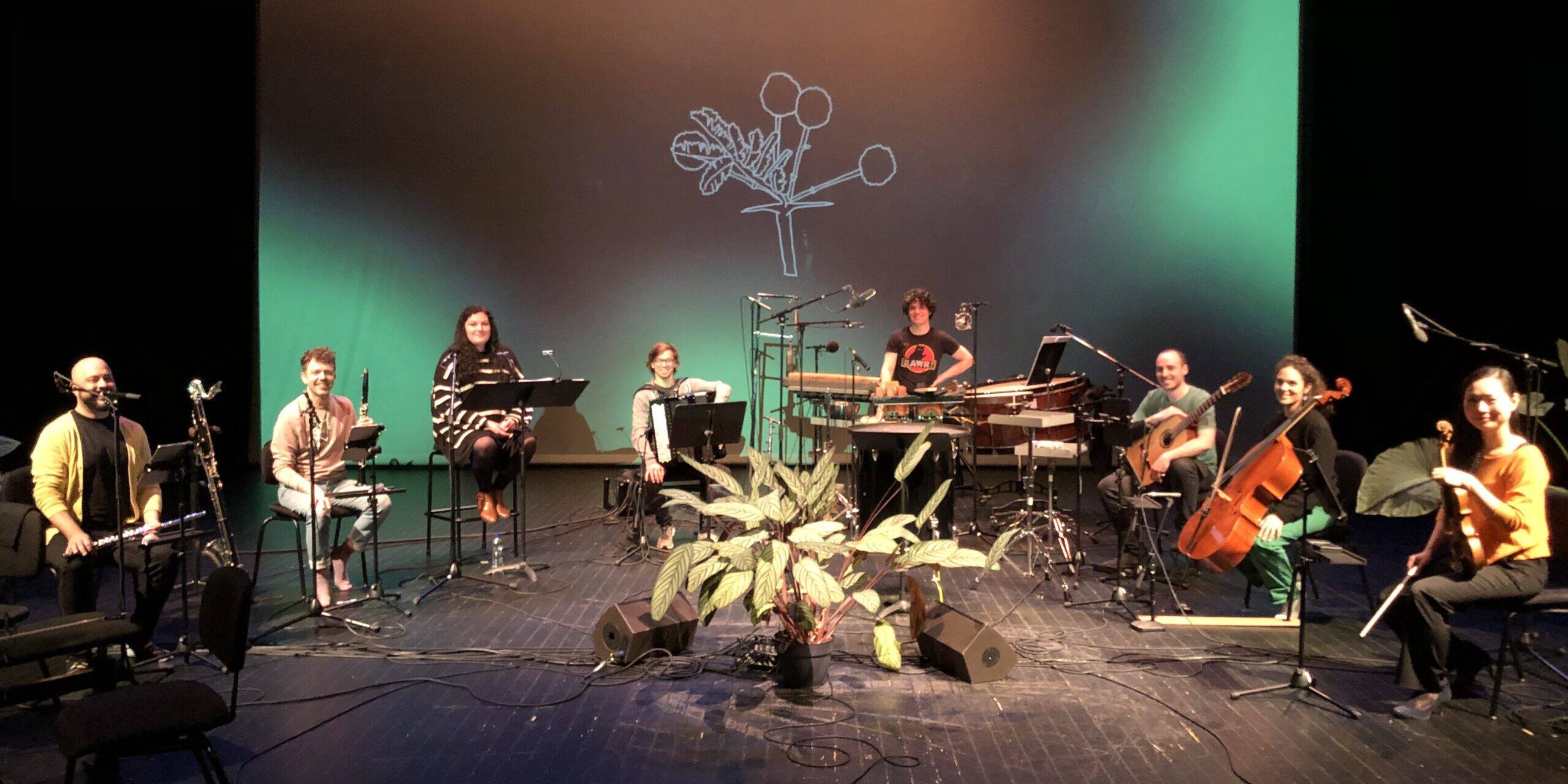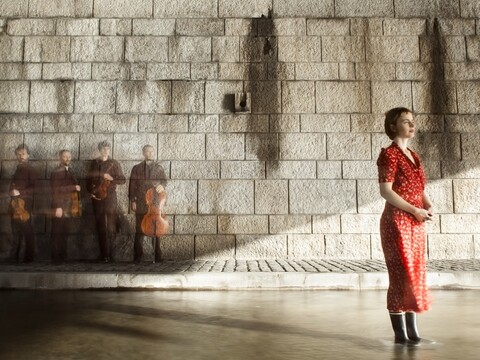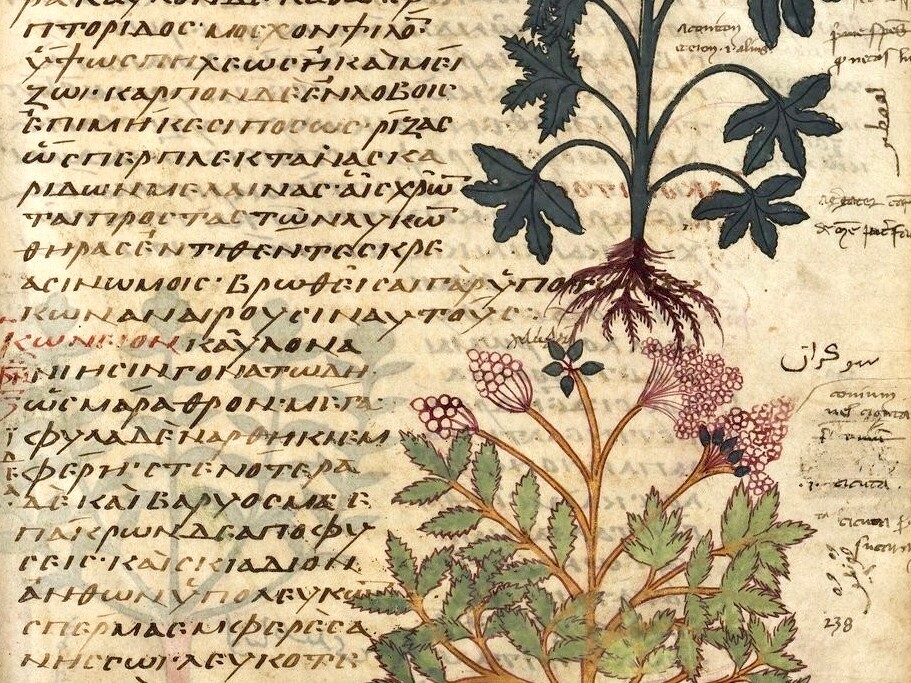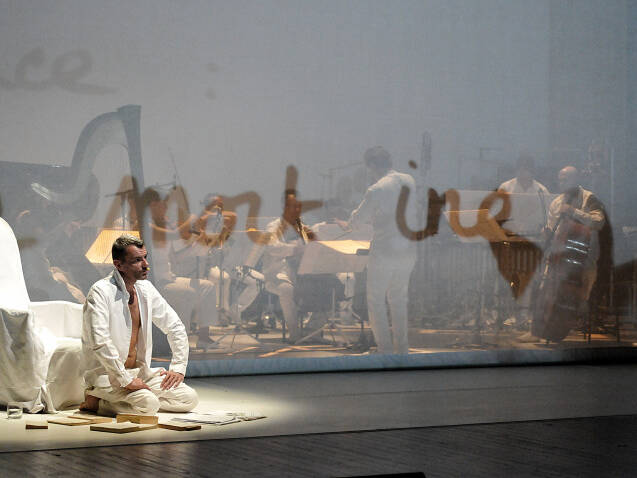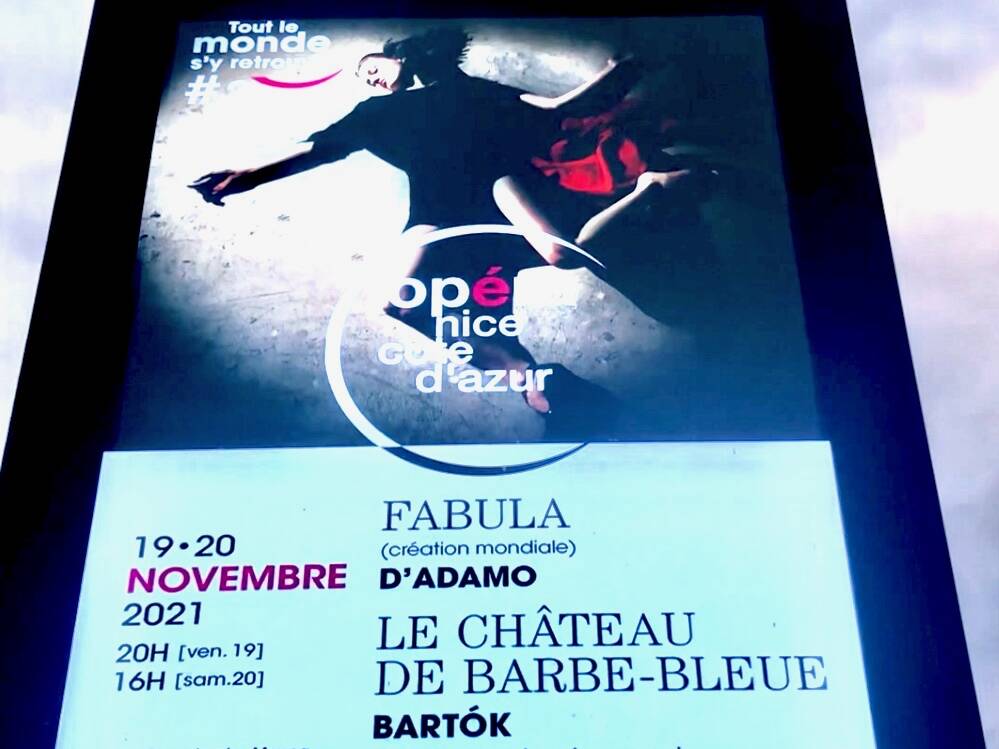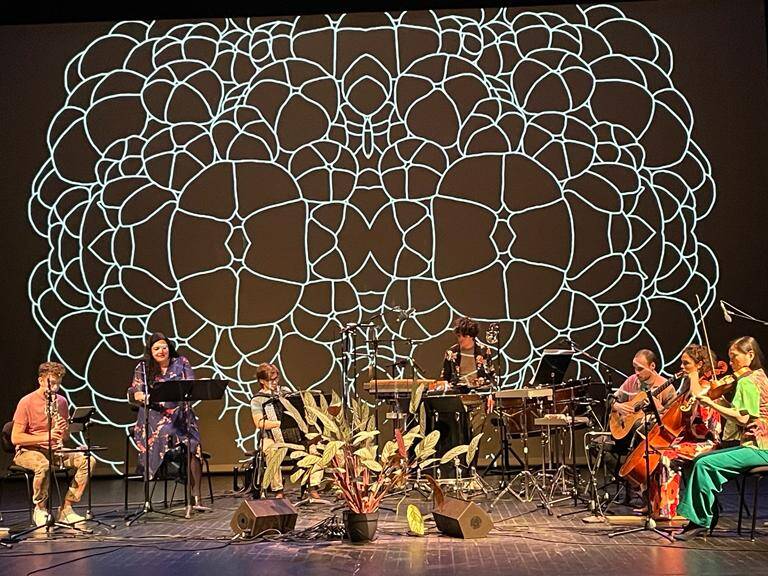Stone garden
Publisher:
Le Chant du Monde – Wise Music Classical
Première:
2023, Collectif lovemusic, Cité de la Musique,
Strasbourg media
Year
2023
Commission:
Ministry of Culture, France
Duration:
25 min
Theories for living things – 2023
for soprano, flute, clarinet, guitar, accordion, percussion, violin and cello.
This cycle for voice and chamber ensemble is composed of four pieces whose themes are four plants of very different sizes and characteristics that have the particularity of establishing a unique relationship with the perception of time and sound, that is, with listening.
Five recitatives open and close the cycle and are interspersed between each of the four pieces. Nine songs, therefore, that celebrate plants.
Singing about the life of cacti, succulent plants with a unique power to resist extreme weather conditions that, above all things, demonstrate a very particular relationship with the perception of time. Cacti live in slow motion, as if frozen, imperturbable, impassive, stoic. They live in a temporality that is their own. By ingesting the pulp of certain cacti, the Kiowas, the Coras, the Tepehuanes, the Tarahumaras and the Huichols of Nayarit seek to acquire magical powers that may allow them to resist indefinitely, the passage of time.
Singing the Moabi, the tallest tree in the Central African canopy and a great percussion player : from a height of 80 meters it drops its fruits that hit the ground, thus producing intermittent low frequencies. A Morse code of plant origin is then generated, decipherable only by the elephants, who will then be able to enter the forest in search of the delicious fruits of the giant tree. This magical code is also decipherable by Pygmy hunters, who cover their bodies with Moabi bark dust to become completely invisible during the hunt.
Singing the Desmodium girans, also called dancing plants or Telegraphenpflanze : the only plants in the world that have … ears. They perceive sounds and react by shaking their leaflets, rotating on their axis, moving. In Bengal it is said that they “make their leaves dance like snakes” hypnotizing those who play or sing so they can see them dance.
Singing the giant water lily, the Victoria Amazonica. Its leaves are like immense skins stretched to the maximum, sound membranes : loud-speakers. They capture sounds coming from the air, amplify them and transmit them to the underwater world and vice-versa. The signals can be perceived by the small inhabitants of water and air, who thus learn of the existence of those who do not live in their own environment. The leaves of the Giant water lilies are exchange zones between two environments, rotating plates, acoustic-vegetal links.
The five recitatives – that open the cycle close it and separate each piece – methodically enumerate the vegetal elements, but also animals and minerals cited by Pedanios Dioskorides in his treatises De Materia Medica. Greek botanist, but also doctor and pharmacologist born between the 20s and 40s of the 1st century AD, in his work, Dioskorides methodically provides the information that allows each plant to be recognized and to understand what its properties are.
In 1544, the Siena-born physician and botanist Pietro Andrea Mattioli published in his botanical masterpiece Commentarii in libros sex Pedacii Dioscoridis the complete list of elements cited fifteen centuries earlier by his predecessor. This litany, translated by Mattioli into ancient Italian, is what the performers invoke in each recitative : the musician-healers then vest ancestral healing powers through plants and dispersing the effect of music.
Theories for living things is a commission of the French Ministry of Culture for the Collectif lovemusic.
Daniel D’Adamo


